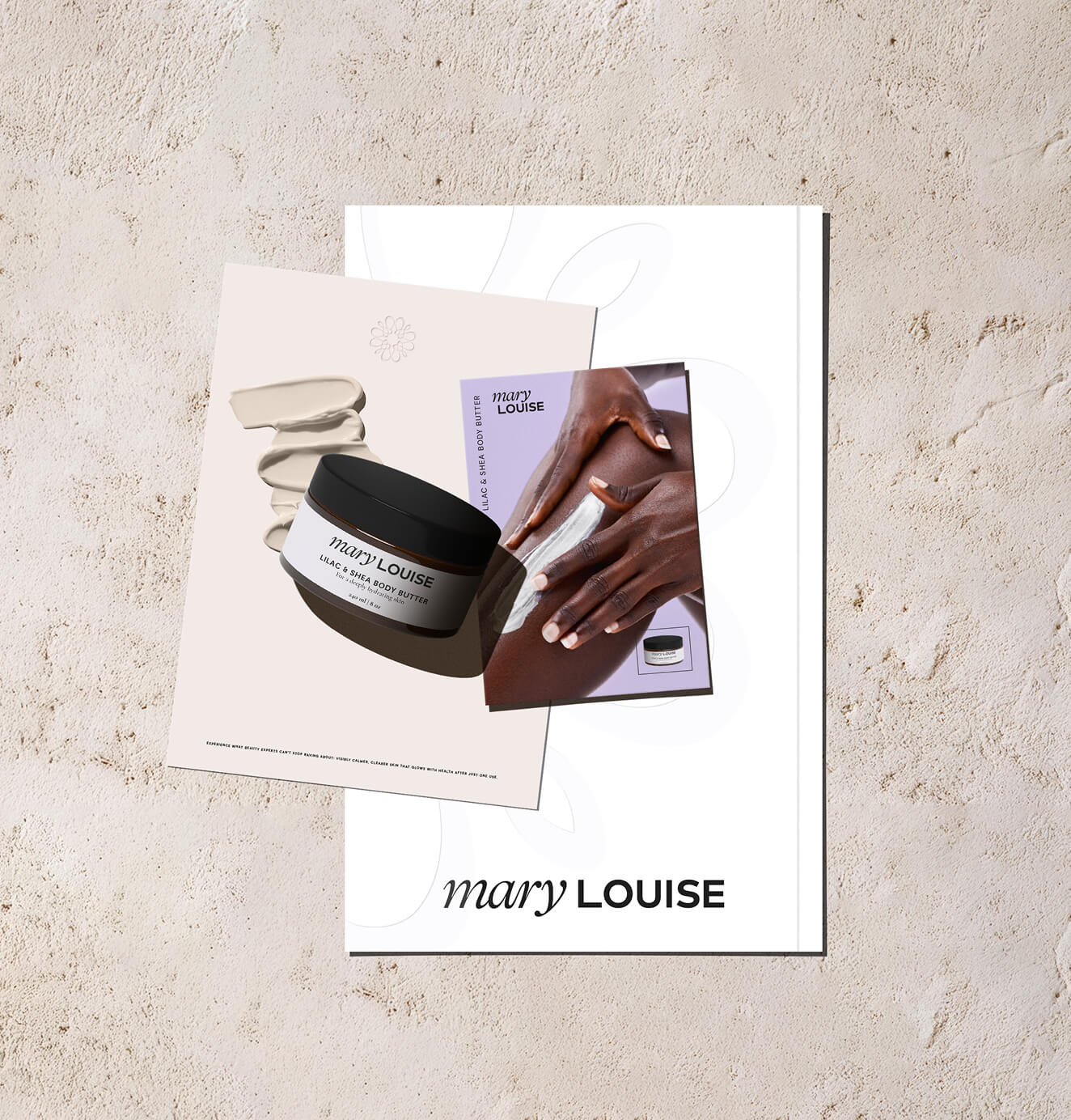Branding Trends 2025: The Future That Will Drive Business Success
02/28/2025
Branding / Business
The future of branding is evolving—discover the key trends set to dominate 2025 and how they can propel your business toward lasting success.

As we step into 2025, the branding landscape is undergoing a seismic shift, marking an era of profound realignment with emerging consumer sentiments, technological advancements, and environmental consciousness.
.png)


Adapting to Change and Shaping the Future



The pace of change in the industry, driven by rapid technological and social acceleration, has set the stage for an exciting yet challenging future, with key branding trends emerging as crucial elements for success. Brands are now at a pivotal point where they must adapt and innovate to remain relevant and successful.
The key to winning minds and market share in 2025 lies in understanding and responding to new consumer profiles and sentiments. This necessitates a deep dive into the actions that brands must take now to align with these evolving preferences. The focus is no longer solely on products and services; it’s about creating a holistic brand experience that resonates with consumers on a personal and emotional level.
In this dynamic environment, the importance of sustainability is paramount. Concerns around climate change are not just influencing consumer behavior but also driving innovation. Brands that acknowledge and address these environmental issues will not only contribute positively to the planet but also connect more deeply with their environmentally conscious consumers.
The shift towards circular and regenerative design is more than a trend; it’s a necessity for brands aiming to create a sustainable future.
Moreover, the intersection of predictive analytics and data science with trend forecasting is revolutionizing how brands approach the market. Understanding where and when to invest has become a science, enabling brands to create products that not only meet but anticipate consumer needs.
In this blog, we will explore the top trends that are shaping the future of branding in 2025. From authenticity and purpose-driven branding to the rise of AI and IoT in creating personalized experiences, we will delve into each trend, examining its implications and how brands can leverage these insights for success.
Join us as we navigate the exciting journey of branding in 2025, where innovation, sustainability, and consumer connection are the keys to business success.
Learn more about Startup Branding.
Authenticity and Purpose-Driven Branding: The Heart of 2025's Branding Strategies












In 2024, branding is not just about creating a recognizable name or logo. It's about forging a deep, authentic connection with the audience. This year, brands are focusing on purpose-driven strategies, aligning themselves with causes and values that resonate with their target demographics.
Emphasizing Authenticity:
Consumers today crave genuineness and transparency in brand communication. They connect more with brands that aren't afraid to show their true colors, warts and all. This means being open about business practices, acknowledging mistakes, and engaging in honest dialogues with customers.
A study by Label Insight revealed that 94% of consumers are likely to be loyal to a brand that offers complete transparency.
Purpose Beyond Profit:
Modern consumers, especially Gen-Z and millennials, are not just buying products or services; they are investing in what a brand stands for. This demographic is more inclined to support brands that demonstrate a commitment to social and environmental issues.
According to a 2023 Nielsen report, 73% of millennials are willing to pay extra for sustainable offerings.
Cultural Sensitivity and Social Responsibility:
Brands are increasingly aware of the cultural and social impacts of their messaging. In 2025, it's essential for brands to be culturally sensitive and socially responsible, ensuring that their marketing efforts resonate positively with diverse audiences.
A survey by Adobe found that 61% of consumers believe diversity in advertising is important.
Sustainable Practices:
Sustainability is no longer a buzzword but a business imperative. Brands that adopt and promote sustainable practices are gaining favor among consumers who are increasingly conscious of their ecological footprint.
Research indicates that companies committed to sustainability practices saw a 4% higher annual return than their counterparts that didn't prioritize sustainability.
These trends highlight a shift towards a more ethical, transparent, and value-driven approach to branding. Brands that embrace these values are likely to see enhanced loyalty and advocacy among their consumer base, driving business success in 2025.
Purpose-Driven Brands and Brand Loyalty
In 2025, branding is increasingly about supporting causes and aligning with consumer values. Consumers, especially Gen-Z, are looking for brands that support meaningful causes beyond just making profits. Aligning your brand with causes that resonate with your audience's values is crucial. This shift towards purpose-driven branding is a response to the growing demand for authenticity and responsibility in brand behavior. It's no longer just about the product or service but about the stance your brand takes on social and environmental issues.
The Aesthetic Shift: Minimalism vs. Maximalism
Branding trends in 2025 are also witnessing a dichotomy between minimalism and maximalism, reflecting broader brand design trends. While minimalism focuses on simplicity and clarity, maximalism embraces bold colors, heavy compositions, and intricate patterns.
This trend indicates a shift from stark, clean aesthetics to more expressive and character-rich designs. Brands can choose to either keep it simple and elegant or go bold and expressive, depending on their identity and target audience.
Storytelling and Emotional Branding
Another key trend in 2025 is the focus on storytelling and emotional branding. Brands are crafting narratives that resonate with their audience on an emotional level, forging stronger connections. Effective storytelling involves infusing authenticity, purpose, and relatability into brand narratives.
Microinteractions, such as small animations or feedback loops, are also being used to enhance user experiences and establish emotional connections with the brand. Effective storytelling is a cornerstone of successful branding, helping to build trust and emotional connections with consumers.
Sustainability and Ethical Practices
Sustainability and ethical practices have become more than just trends; they are now essentials in branding. Consumers are increasingly conscious of their environmental impact and prefer brands that demonstrate a commitment to sustainability. This includes using eco-friendly materials, reducing waste, and minimizing carbon emissions. Ethical branding extends beyond environmental concerns to include fair labor practices and social responsibility.
Innovative Brand Identity and Design
Visual identity in 2025 places a strong emphasis on minimalism and simplicity. Brands are opting for cleaner, more straightforward designs in logos and packaging, which helps make the brand more identifiable and memorable. Additionally, the use of gradient and duotone elements in visuals is gaining popularity, offering a unique identity that evokes emotion.
Regenerative Branding and Experimentation
Brands are increasingly adopting a culture of bold experimentation and regenerative branding. This approach involves taking risks and trying new strategies to innovate and offer unique experiences. Regenerative branding extends beyond sustainability, focusing on creating additional value for society and the planet. It's about brands taking an active role in not just reducing harm but also contributing positively.
These trends indicate a dynamic shift in the branding landscape, where authenticity, purpose, emotional connection, sustainability, and innovation are key to connecting with the modern consumer and standing out in the market.
Want to learn more about brand platforms, Brand Strategy and Brand Identity? Keep reading!
If you need help with your companies brand strategy and identity, contact us for a free custom quote.
Evolving Brand Design and Strategy in 2025

As we move into 2025, several key trends are shaping the branding landscape. Understanding and leveraging these trends is crucial for brands aiming to stay ahead in a rapidly evolving market.
Purpose-Driven Brands:
Brands are increasingly expected to support causes that extend beyond monetary profits. Consumers, particularly Gen-Z, are looking for brands that take a stand on significant issues and align with their values. This shift towards purpose-driven branding is a crucial factor in determining a brand's success.
Aesthetic Shift from Minimalism to Maximalism:
The branding world is witnessing a transition from minimalist designs to more expressive and character-rich maximalist styles. This trend indicates a preference for bold colors, heavy compositions, and intricate patterns, offering brands a chance to make a more vibrant and attention-grabbing statement.
Sustainability and Eco-Conscious Strategies:
The impact of climate change is significantly influencing branding, especially in packaging design and manufacturing. Consumers are increasingly drawn to eco-friendly and sustainable practices, making it vital for brands to adopt environmentally conscious strategies.
Authenticity in Brand Communication:
Authenticity is becoming a central tenet of brand strategy. Consumers favor brands that are transparent and genuine in their communication, showcasing the human side of their business. Engaging in authentic interactions helps build trust and credibility with the audience.
Innovative Visual Design Elements:
The use of gradient, duotone, and 3D elements in branding is gaining popularity. These design choices allow brands to create unique identities that evoke emotion and captivate audiences. Gradients add depth and visual interest, while duotone simplifies color palettes, and 3D elements add realism and interactivity to brand designs.
Embracing Experimentation and Innovation:
A key trend for 2025 is the embrace of bold experimentation in branding strategies. This approach involves taking risks and trying new methods to innovate and offer unique experiences, essential for brand development and promotion to new levels.
Regenerative Branding Trends:
Moving beyond traditional sustainability, regenerative branding focuses on creating additional business, social, and planetary value. This holistic approach considers the broader role of a brand in meeting societal needs and shaping cultural norms.
Retro Branding Revival and Custom Experiences:
There's a growing trend of reviving retro branding aesthetics, combined with modernity, to create a sense of nostalgia and familiarity. Additionally, crafting unique and customized experiences for consumers is becoming increasingly important.
Employer Branding and Talent Attraction:
Branding is also being used strategically to attract top talent. Employer branding campaigns are crucial for companies to recruit effectively and build a strong workforce.
In conclusion, brands in 2025 must navigate a landscape that values authenticity, purpose, sustainability, and innovation. By understanding and integrating these trends into their strategies, brands can create deeper connections with their audiences, stand out in a competitive market, and foster long-term success.
Emerging Branding Trends and Design Trends for 2025
As we progress into 2025, the branding landscape is evolving with distinct trends and strategies that are shaping how businesses connect with their audiences.
Authenticity and Transparency in Branding
Authenticity continues to be a crucial element in branding, with 86% of shoppers preferring brands that exhibit an authentic and honest personality on social media. This trend underscores the importance of genuine interactions and transparency in building trust with consumers.
Personalization and Customer Experience
Personalization remains a key factor, with 77% of shoppers more likely to buy from brands that personalize their shopping experience. Brands are increasingly using data analytics and AI to tailor customer experiences, enhancing engagement and loyalty.
The Role of Social Media and Employee Advocacy
Social media remains a powerful tool for branding, with 89% of consumers more likely to purchase from brands they follow on social media. Additionally, employee advocacy is emerging as a significant trend. Companies with active employee advocacy programs are 58% more likely to attract talent, and 86% of employees in such programs report a positive impact on their careers.
Sustainability as a Core Value
Sustainability is no longer just a trend but a fundamental shift in consumer consciousness. Brands committed to reducing their environmental footprint, using eco-friendly materials, and minimizing carbon emissions are favored by consumers.
Storytelling and Emotional Branding
Storytelling remains a powerful tool for creating emotional connections with consumers. Brands like Slack, Google, and Mailchimp effectively use microinteractions and small details to create memorable brand experiences.
The Visual Impact of Branding
Visual elements like colors and logo design significantly impact brand image. A signature color can increase brand recognition by 80%, and notable examples include Starbucks green and IKEA's yellow and blue. Additionally, the color blue is used in the logos of 2 in 5 Fortune 500 companies, invoking feelings of calmness and trust.
Minimalism in Brand Design
Minimalistic branding, focusing on simplicity and clean lines, is gaining traction. This trend is especially relevant in a world overwhelmed with information, providing clarity and elegance to consumers.
Innovative Design Trends
New design trends are emerging, such as the use of typography with a unique twist and the integration of experimental elements in logo design.
By embracing these trends, brands can effectively navigate the dynamic environment of 2025, creating strategies that resonate with consumers and foster long-term loyalty and engagement.
Leveraging Digital Innovations in Branding for 2025

As we dive deeper into 2025, digital innovations are increasingly becoming integral to effective branding strategies. These innovations are not only transforming how brands interact with their customers but also reshaping the very essence of brand experiences.
Augmented Reality (AR) and Virtual Reality (VR) in Brand Engagement
AR and VR technologies are playing a pivotal role in creating immersive brand experiences. These technologies allow brands to engage with customers in dynamic and interactive ways, creating memorable interactions and a lasting impression.
AI-Driven Personalization and Customer Service
The utilization of artificial intelligence in branding has grown beyond personalization. AI-driven chatbots, customer service, and virtual assistants are enhancing the customer experience by providing efficient and round-the-clock support. This level of engagement fosters a deeper connection between the brand and its customers.
Social Media's Expanding Role in Brand Exposure
The influence of social media on brand exposure continues to expand. Brands are increasingly using social media platforms not just for marketing but for real-time interaction with customers. This approach allows brands to showcase their personality and engage with their audience effectively, driving sales and building brand loyalty.
Omnichannel Marketing for Seamless Customer Experiences
Omnichannel marketing is becoming essential for brands to maintain a consistent presence across multiple channels, from social media to physical stores. A seamless omnichannel experience is crucial as consumers frequently switch between online and offline touchpoints.
Importance of User-Generated Content (UGC)
UGC is a powerful branding tool that provides an authentic and unbiased perspective on a brand's products or services. Brands leveraging UGC by encouraging customers to share their experiences can build trust and authenticity, which are vital for customer engagement and loyalty.
Data-Driven Brand Strategies
Data analytics are being extensively used to inform brand strategies. Insights derived from consumer data help brands tailor their messaging and products to the specific needs and preferences of their target audience. This approach is essential for creating relevant and impactful brand experiences.
Evolving Logo and Typography Trends
Logo design and typography are undergoing significant changes, with a shift towards minimalism and simplicity. Brands are opting for logos and typography that are easy to recognize and remember, enhancing brand recall and identity.
Sustainable and Ethical Branding
Sustainability and ethical practices continue to be at the forefront of branding trends. Consumers are increasingly drawn to brands that demonstrate a commitment to environmental and social responsibility, making it crucial for brands to integrate these values into their overall strategy.
By incorporating these digital innovations and trends into their branding strategies, brands in 2025 can ensure they stay relevant, engage effectively with their audience, and build a strong, loyal customer base.
Embracing the Future: Navigating Branding Evolution in 2025
The future of branding in 2024 continues to evolve, shaped by technological advancements, changing consumer behaviors, and a dynamic global market. Brands need to adapt to these changes to stay relevant and competitive.
Redefining Brand Identity with Technological Integration
As technology continues to advance, brands are finding innovative ways to incorporate new tech into their identity. This includes using augmented and virtual reality for immersive marketing campaigns, and leveraging AI for more than just customer service but also in product development and market analysis.
Enhancing Brand Engagement through Interactive Experiences
Interactive experiences are becoming a key strategy for brands to engage with their audience. This includes interactive web design, mobile apps, and social media campaigns that encourage user participation and engagement.
The Rise of Voice Search and its Impact on Brand Visibility
With the growing popularity of smart speakers and voice assistants, optimizing for voice search is becoming crucial. Brands need to ensure that their content is easily discoverable through voice search queries to maintain visibility and relevance.
The Growing Importance of CSR in Brand Perception
Corporate Social Responsibility (CSR) is increasingly becoming a factor in consumer decision-making. Brands that actively participate in social and environmental causes are gaining favor with consumers who are looking for more than just products and services but also corporate accountability and responsibility.
The Shift Towards Hyper-Personalized Marketing
Hyper-personalization is becoming the norm in marketing strategies. By leveraging data analytics, brands can create highly personalized and targeted campaigns that resonate more effectively with their audience.
Sustainable and Ethical Brand Practices as the New Standard
Sustainable and ethical practices are no longer optional but a necessity for brands. Consumers are increasingly conscious of the environmental and social impacts of their purchases, and brands that demonstrate a commitment to sustainability and ethics are favored.
The Impact of Globalization on Brand Strategies
In an increasingly connected world, brands need to consider the global impact of their strategies. This involves understanding diverse cultures, respecting global trends, and being adaptable in a multi-cultural market.
Continued Emphasis on Brand Stories and Narratives
Storytelling remains a powerful tool in branding. Brands that can effectively tell their story, convey their values, and connect emotionally with their audience will continue to thrive.
As brands navigate through 2024, the focus will be on adapting to technological advancements, understanding changing consumer preferences, and ensuring ethical and sustainable practices. These elements are crucial for building a strong, resilient brand that resonates with modern consumers and stands the test of time.

Sloane Avery
As entrepreneurs, they’ve built and scaled their own ventures from zero to millions. They’ve been in the trenches, navigating the chaos of high-growth phases, making the hard calls, and learning firsthand what actually moves the needle. That’s what makes us different—we don’t just “consult,” we know what it takes because we’ve done it ourselves.
Want to learn more about brand platform?
If you need help with your companies brand strategy and identity, contact us for a free custom quote.
We do great work. And get great results.
+2.3xIncrease in revenue YoY
+126%Increase in repurchase rate YoY








+93%Revenue growth in first 90 days
+144% Increase in attributed revenue








+91%Increase in conversion rate
+46%Increase in AOV








+200%Increase in conversion rate
+688%Increase in attributed revenue












